Hagia Sophia Mosque, also known as Ayasofya Mosque, is an iconic and historically significant landmark located in the heart of Istanbul, Turkey. Originally built as a Christian cathedral in the Byzantine era, it later served as an imperial mosque during the Ottoman Empire. Today, the Hagia Sofia is active place of worship for Turkish Muslims.

HISTORY
Originally built as a cathedral during the Byzantine Empire in 537 AD under the reign of Emperor Justinian I, it served as the spiritual heart of Eastern Orthodox Christianity for nearly a thousand years. Its iconic dome and grand architecture were unparalleled during its time.
In 1453, after the Ottoman conquest of Constantinople, Hagia Sophia was converted into a mosque, and minarets were added. It continued as a mosque for nearly five centuries under Ottoman rule.
In 1935, during the early years of the Republic of Turkey, the building was secularised and turned into a museum by Mustafa Kemal Atatürk, the founder of modern Turkey.
In July 2020, Hagia Sophia was once again converted into a mosque and continues to be a significant cultural and historical symbol, drawing visitors from around the world.
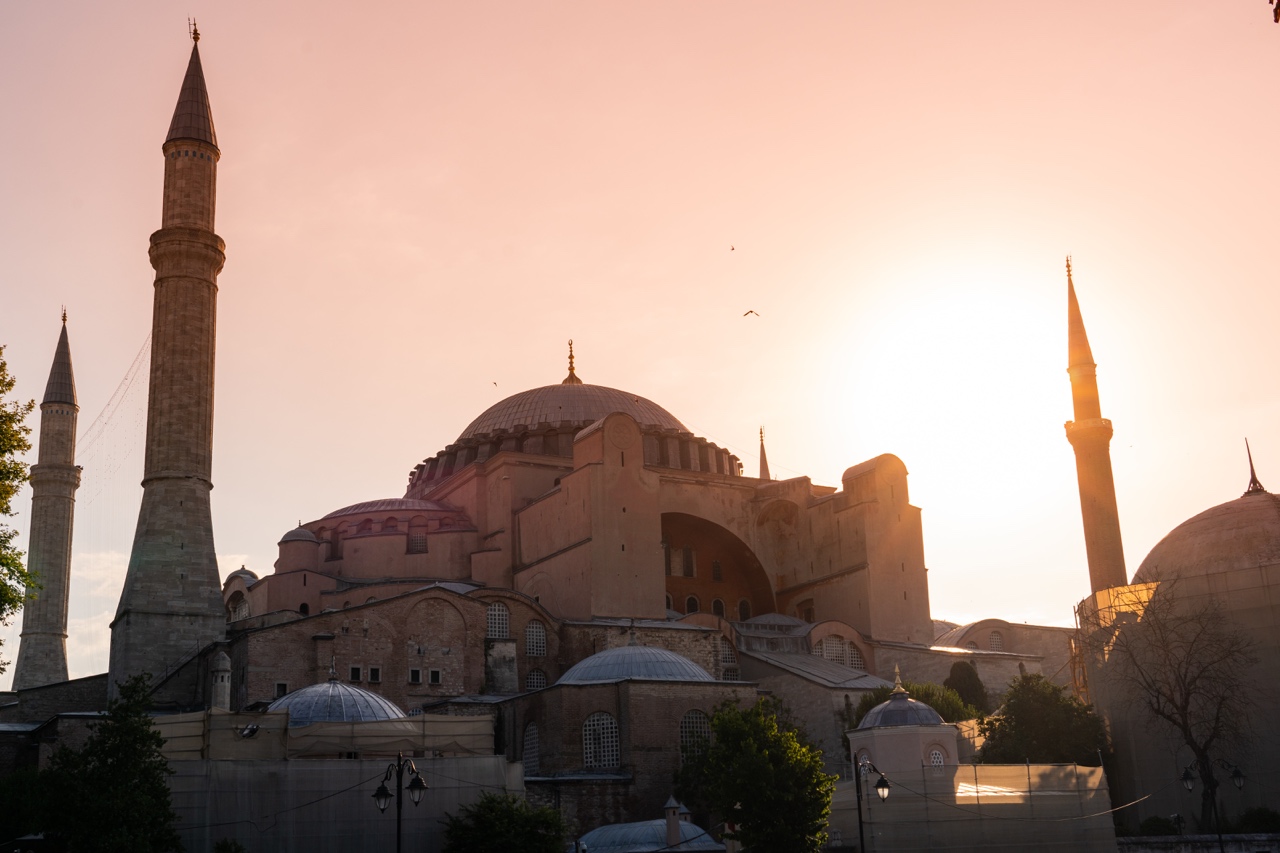
LOCATION
Hagia Sophia Mosque is situated in the historic district of Sultanahmet, in the European part of Istanbul. It is easily accessible from the T1 line station on the tram, at Sultanahmet station.
ARCHITECTURE
The Hagia Sophia’s architecture is a blend of Byzantine and Ottoman styles. Originally constructed as a cathedral, it incorporates features of the Byzantine style architecture, including its majestic dome, soaring arches, massive columns, and stunning mosaic artwork.
After its conversion into a mosque, Islamic elements were added, such as the minarets and mihrab. This unique combination of Byzantine and Ottoman elements makes Hagia Sophia a very unique and beautiful architectural masterpiece that continues to captivate visitors.
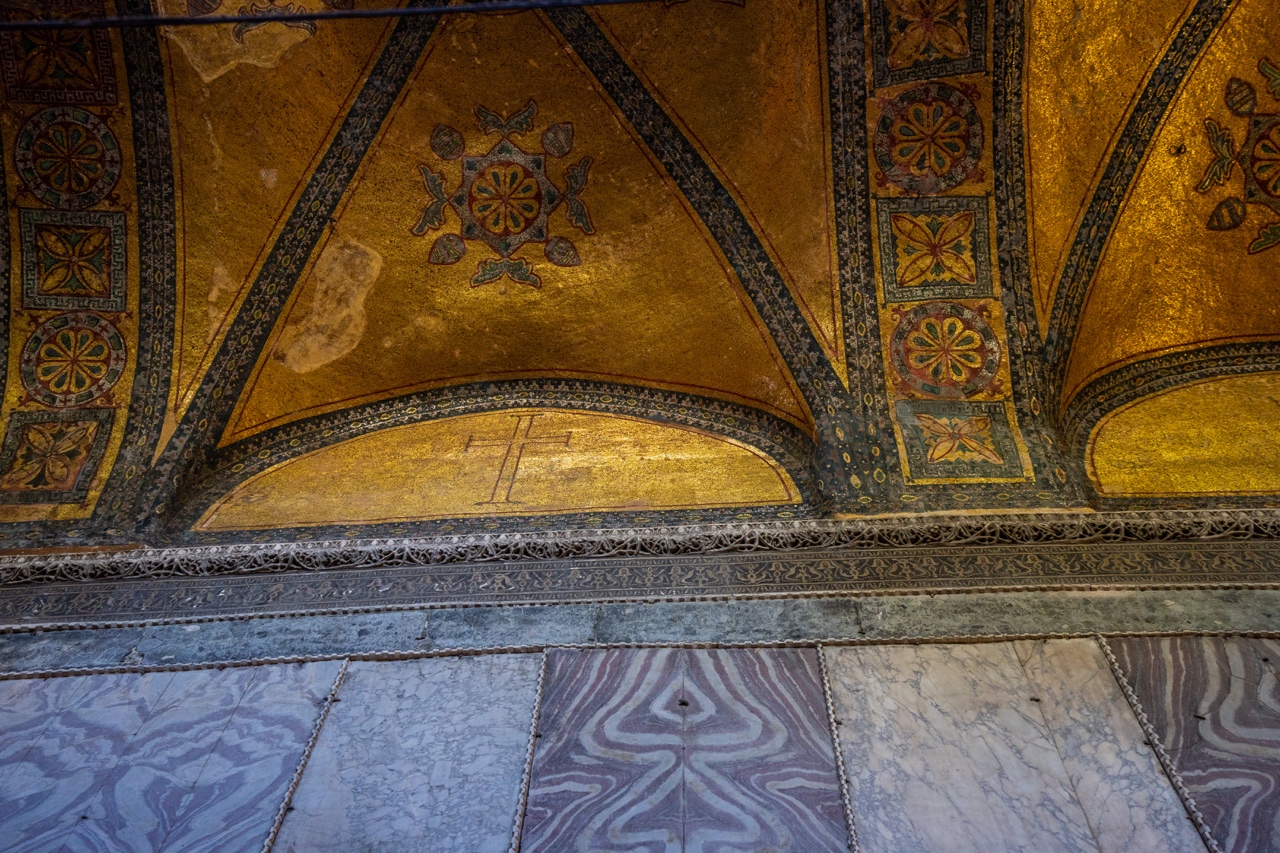
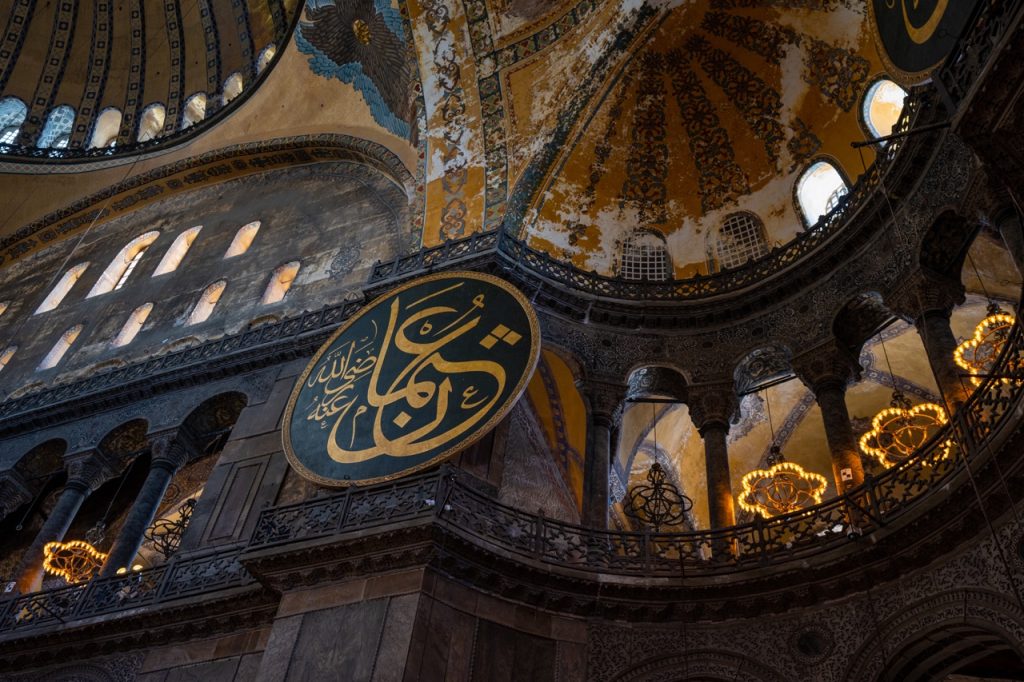
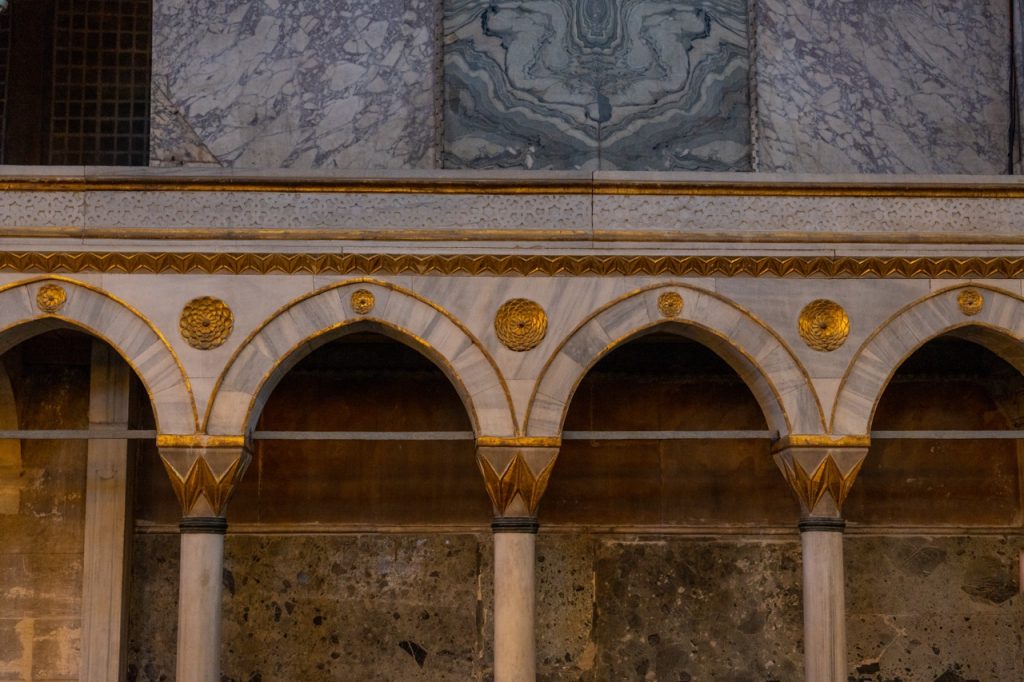
THINGS TO KNOW BEFORE YOU GO
Entrance Fee: Entrance to the mosque is free for visitors, but during prayer times, the mosque may be restricted to visitors.
Dress Code: The Hagia Sofia is an active place of worship, so visitors must dress modestly. Men should have pants past the knee, and women are required have their shoulders, knees, and head covered. Scarves are available (for a small fee) at the entrance for women to cover their heads if needed.
Before entering the mosque, you are also required to remove your shoes.
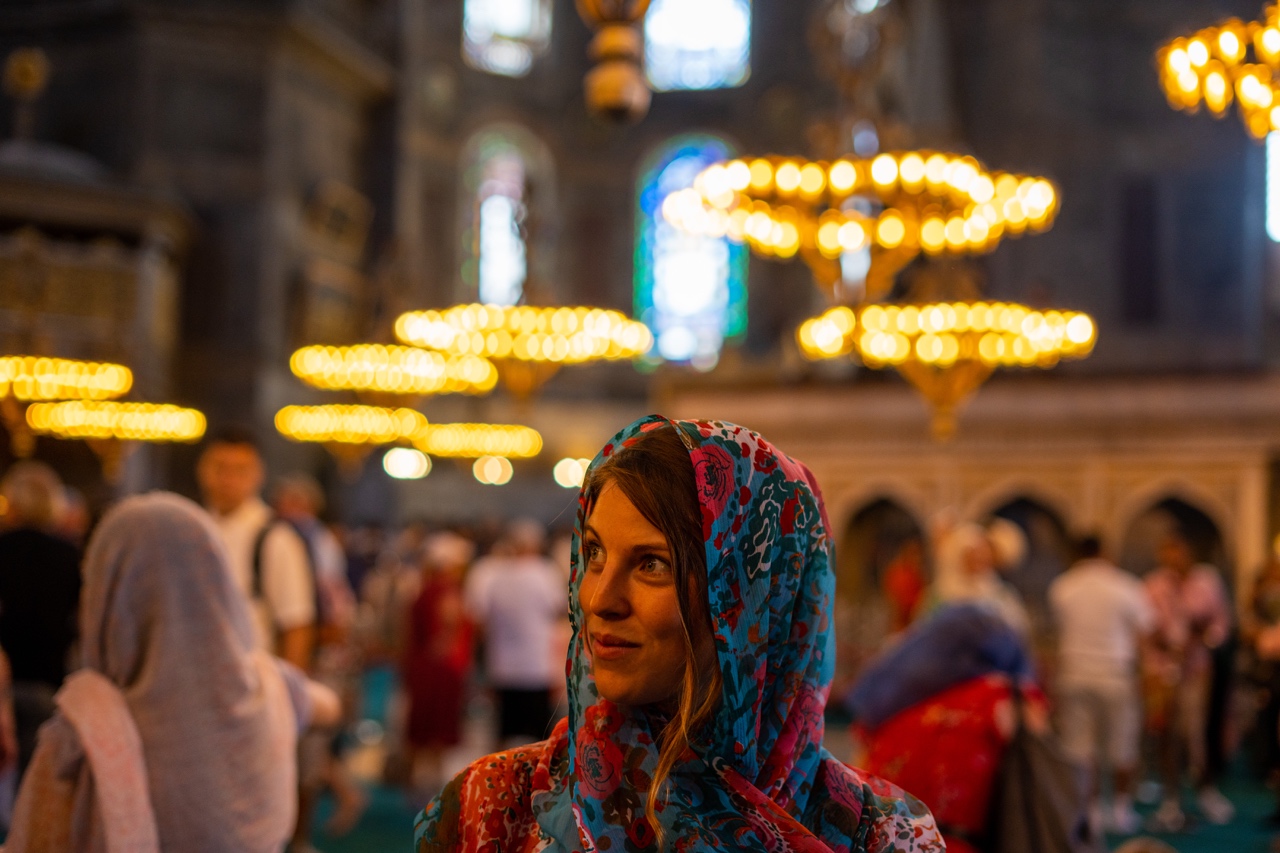
INSIDE THE MOSQUE
When visiting Hagia Sophia, there are several essential things to pay attention to, to fully appreciate its historical and cultural significance:
Byzantine Mosaics: Observe and admire the intricate Byzantine mosaics that cover the interior walls and ceilings. These stunning artworks depict religious scenes and figures, offering insights into the building’s early Christian heritage.


Architecture: The impressive architecture of Hagia Sophia, including the massive dome, soaring arches, and impressive marble columns, are a must see.
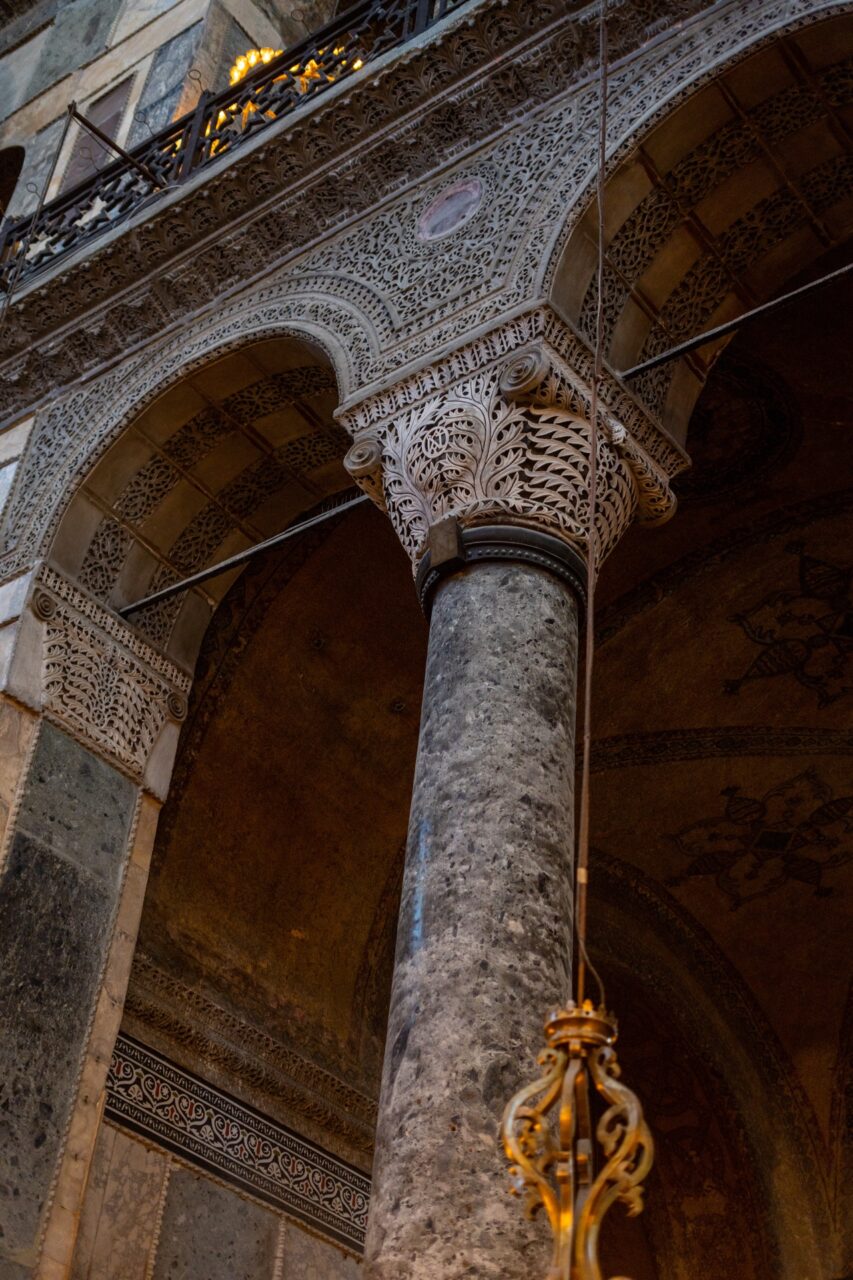
Calligraphy Panels: Look for the large calligraphy panels displaying Arabic inscriptions, which were added when Hagia Sophia was converted into a mosque. These panels add a distinctive Islamic touch to the interior.
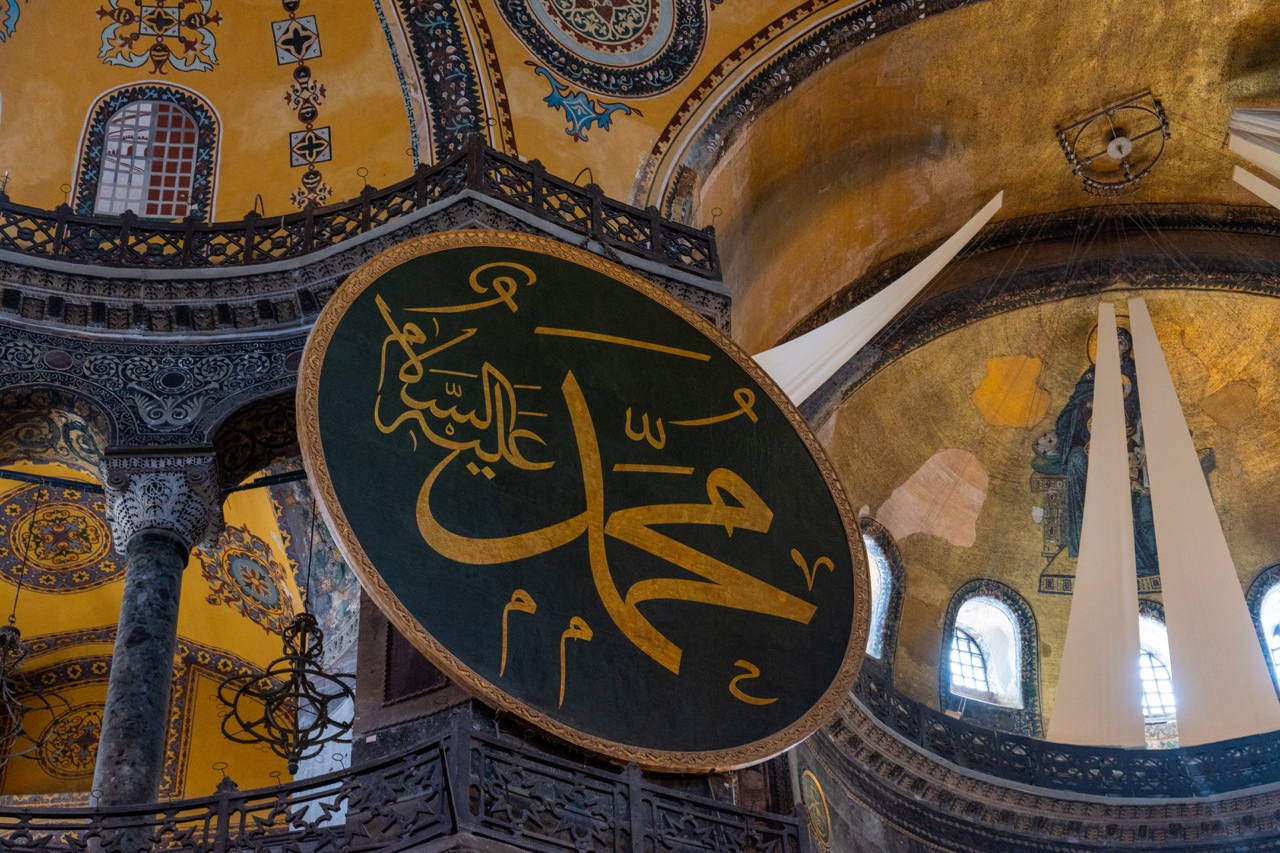
Mihrabs and Minbar: Observe the beautiful mihrabs (prayer niches) and minbar (pulpit) inside the building, which are important elements of a mosque. These additions were made during the period when Hagia Sophia functioned as a mosque.
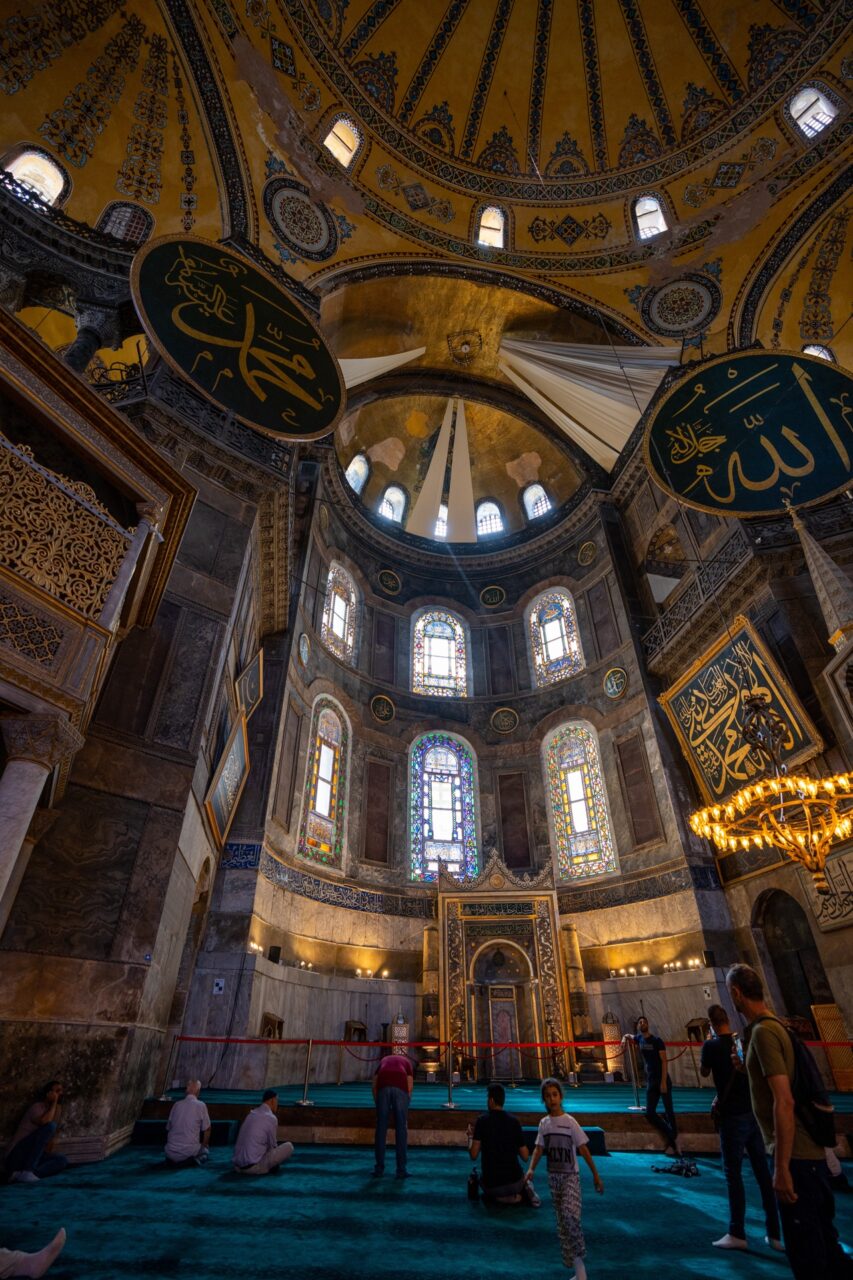
WHEN TO VISIT
The Hagia Sofia is one of the most popular tourist sites in Istanbul, so it can be quite crowded. Visit early in the morning or during weekdays to avoid large crowds and enjoy a more tranquil experience. Make sure you visit outside of prayer times to explore the mosque freely.
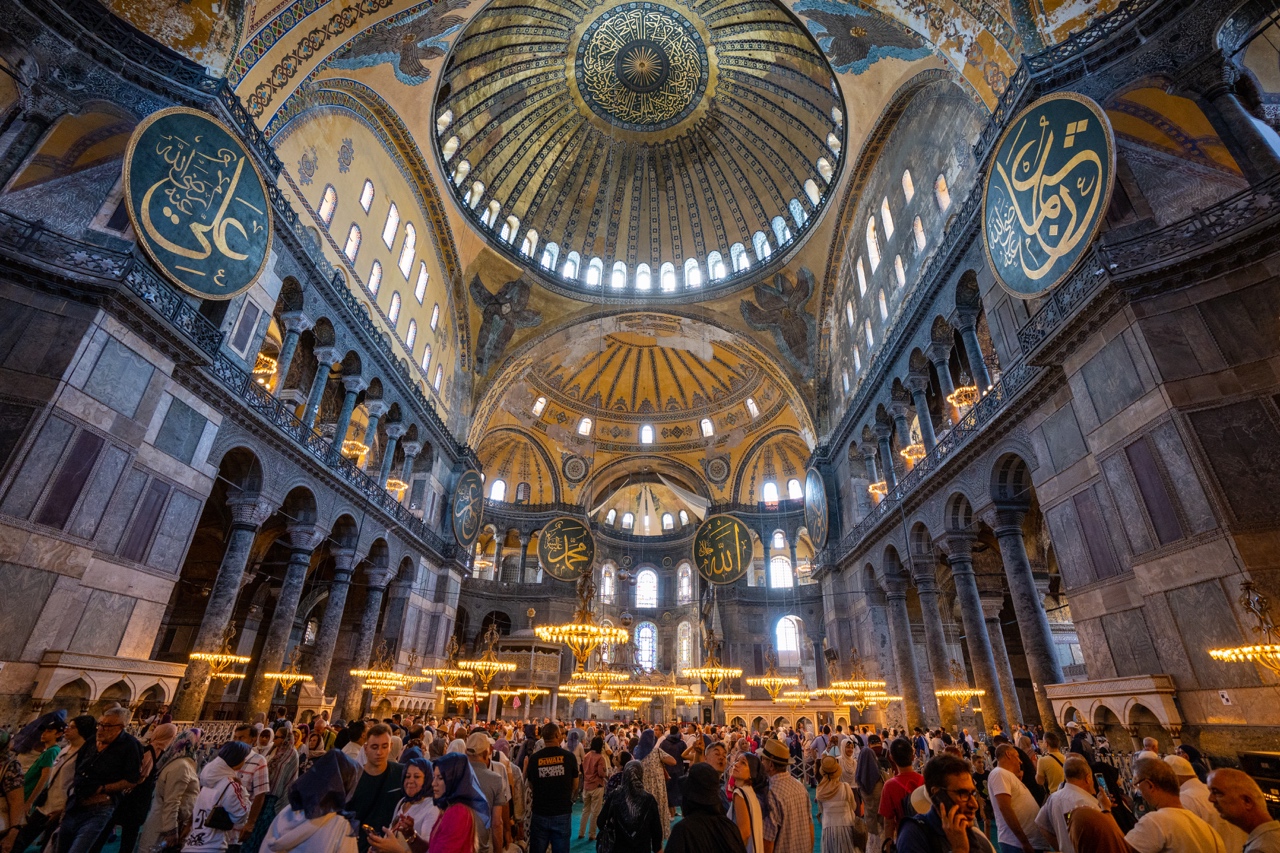

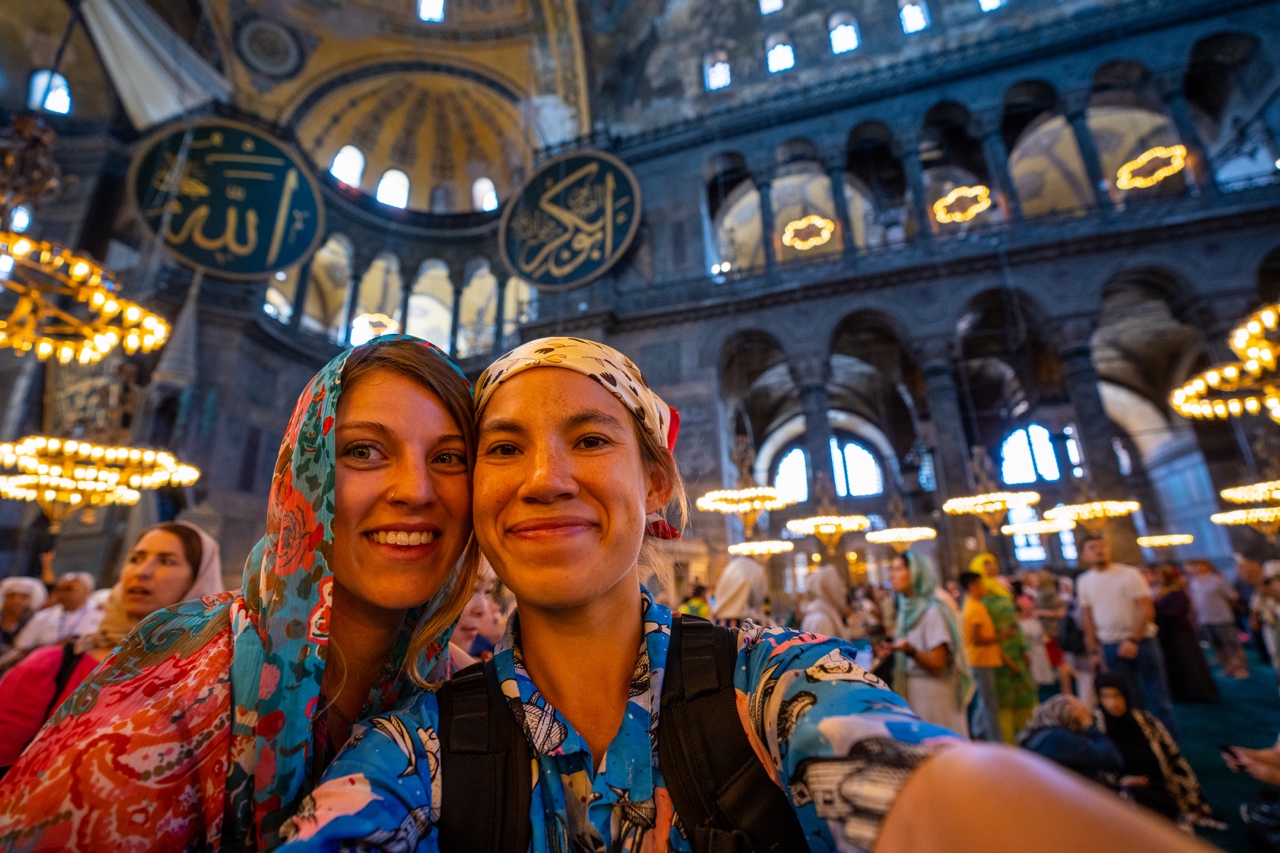
NEARBY ATTRACTIONS
Hagia Sophia Mosque is located near other must-visit landmarks, such as the Blue Mosque, Grand Bazaar, Topkapi Palace, and the Basilica Cistern.
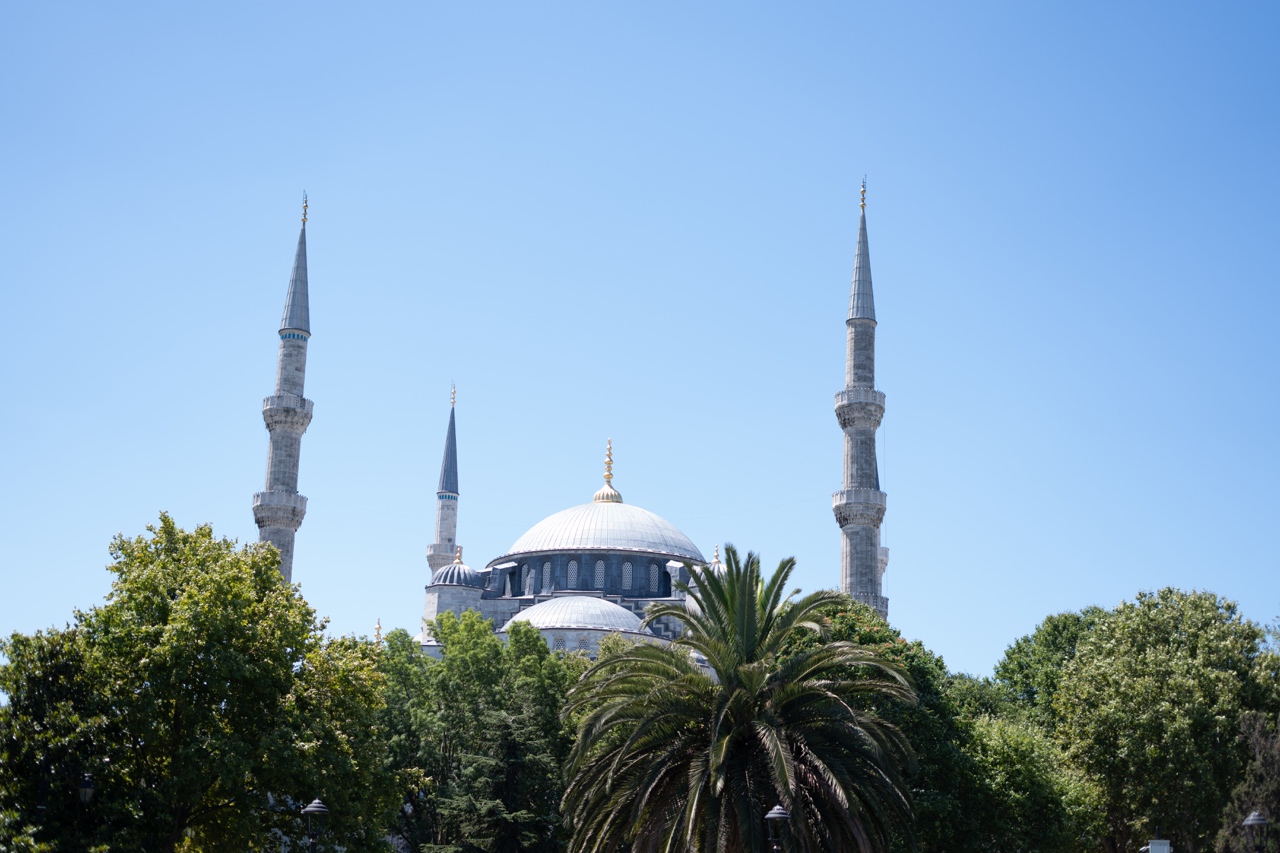
To check out our full Istanbul gallery, click here!
